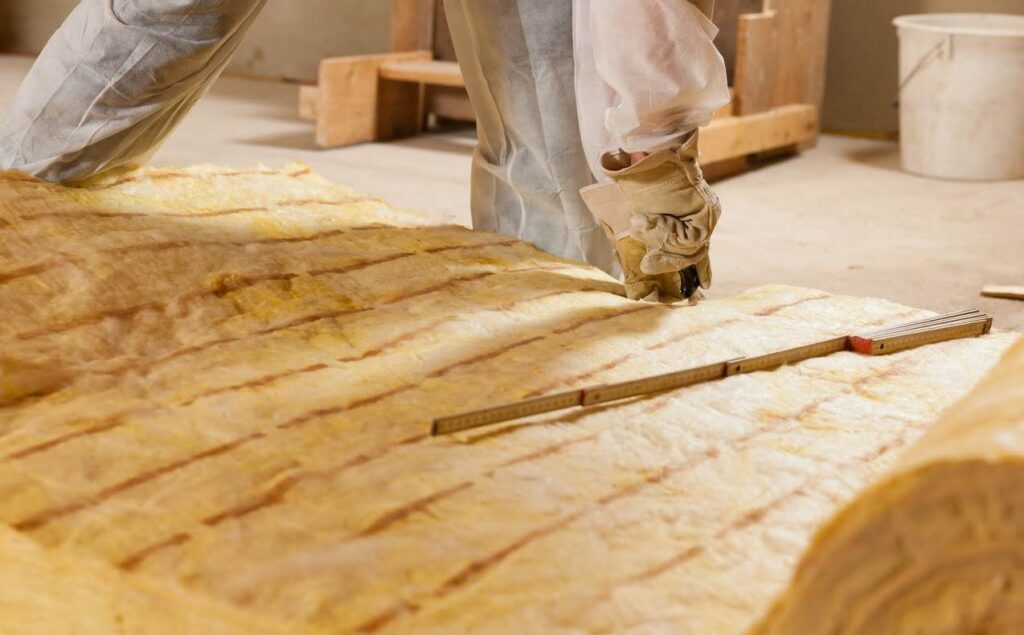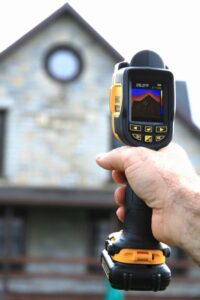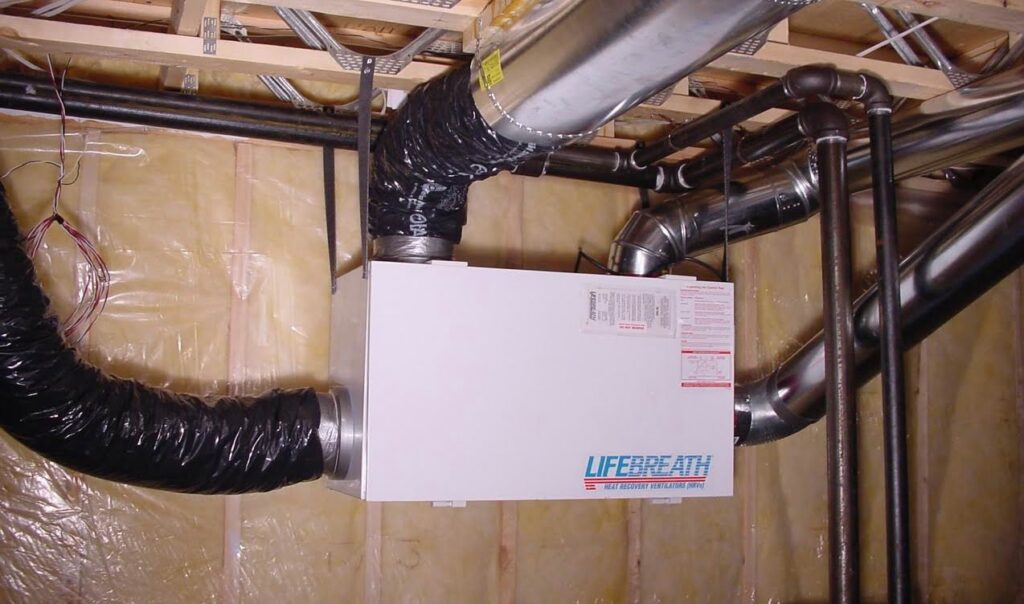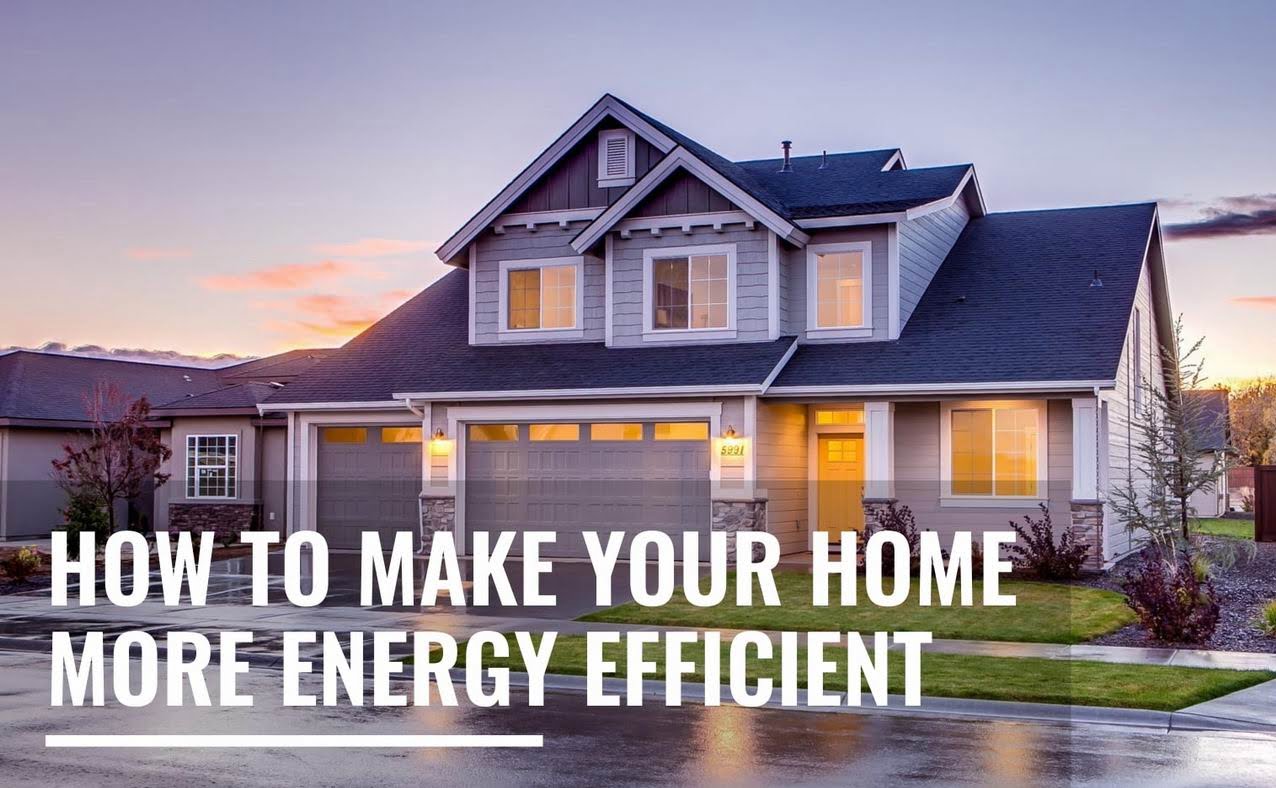While the energy efficiency of new homes and renovations has gone way up over the last few decades, most people don’t realize how much more gains are possible.
Employ the renovation and new construction strategies you’ll find here and you’ll spend at least 50 per cent less on energy compared with new homes built to current code. Your home will also be cosier and healthier, too.
Home energy efficiency strategy #1: Refine the building envelope
Air leakage, thermal bridging and convective energy losses are the three typical design issues where modern homes can be improved beyond code levels.
Traditional stud frame construction makes it challenging to create a tight building envelope. Wooden wall frame members make up 20 per cent of the surface area of a wall and yet deliver only about R6 of insulation wherever wood extends from the interior face of the wall to the outside.
Also, if air is allowed to move through the insulation layers of a home, thermal efficiency drops by 50 per cent or more, even if none of that air movement makes it to indoor spaces.

Innovative building systems that solve these problems are becoming more and more common. The SIPs panels shown above are one example.
In part this is due to rising energy performance standards required by code. Building authorities have made it known that standards will continue to rise to the point where today’s stud frame walls won’t be allowed anymore.
Building ahead of code now will put your new home and addition exactly where minimum code standards will be tomorrow.
Bottom line: Consider panelized building systems and continuous exterior insulation cladding systems for your new home or addition.
Tech tip: Upping the insulation game
It takes skill, knowledge and diligence to install insulation and energy retrofits properly, but there’s currently no way for contractors or consumers to know for sure if specific insulation installers know what they’re doing.
It’s an unregulated arena right now, and that’s why the North American Insulation Manufacturers Association (NAIMA) is creating a certification program for people who install insulation products.

If you’re paying for insulation and deep energy upgrades, it’s only reasonable to want the people doing the work to be independently certified. Substantial and mandatory improvements in the energy performance of homes are coming. The Framework for Growth and Climate Change outlines these changes and is a result of the Paris Agreement signed by 196 nations in October 2016.
Home energy efficiency strategy #2: On-site energy production
Imagine a home that uses no outside sources of energy, yet remains comfortable, well lit and secure even in a climate that gets colder than -20 C. It’s called “net zero” housing and the building world is moving towards it now.
Combine an extremely efficient home with solar or wind energy collection and you can get a house that incurs almost no energy bills. One of the most promising technologies that makes this possible is something called evacuated tube solar collectors. That’s what you can see below and you can download a full-size drawing here.

Imagine a tube made of two layers of glass. The inner layer has an energy absorbing black coating with liquid flowing inside. The second glass tube is larger than the first and surrounds it with a nearly perfect vacuum in the space between.
The sun shines on this assembly, heating the liquid in the inner tube while hardly losing any heat to the outdoors because of the excellent insulating properties of the vacuum. This is how evacuated tube solar collectors work.
Connect a bunch of these tubes together, circulate fluid through the tubes, and you’ve got a powerful source of on-site heat production.
Evacuated tube collectors routinely put out liquid that’s 65 to 80 C (150 to 175 F), even in winter. Store this water in an insulated tank in the basement and you’ve got a stockpile of energy for space heating.
Bottom line: Consider on-site energy production to get your home or reno closer to the net-zero ideal.
Home energy efficiency strategy #3: Optimize energy choices
The cost of energy varies wildly depending on what form you buy and how it’s used. The cost of a million BTUs of electricity used to power a baseboard heater in Ontario, for instance, is more than 10 times the price of the same amount of natural gas burned in a high-efficiency furnace. Yes, 10 times.
In regions where natural gas isn’t available, propane is about 40-per-cent cheaper than the same amount of electricity used directly for heating. But propane is still twice as expensive as firewood, even when you buy it ready to burn.

One of the main things to remember as you choose the energy sources your home will use is the inherent inefficiency of grid electricity. We certainly need electricity for lots of things, but you should never use it for heat production in the usual ways if you’re smart.
Electricity will always average out to be the most expensive way to heat when it’s run through any kind of baseboard heater or electric furnace. This is because the production and distribution of electricity has so much unavoidable inefficiency built in. Conversion and transmission losses are the main reason why.
Every time you convert from one form of energy to another, you lose. For instance, centrally produced electricity begins with some form of heat or motion at a nuclear power plant, a natural gas generating station or the spinning turbines of a hydro electric dam far away.
Even the most efficient thermal generating stations lose 50 to 65 per cent in the conversion process right off the top. More losses — five to 18 per cent — are incurred as the electricity travels long distances over wires to get to your home.
And when that power finally gets to you, it’s converted back to heat by running through a resistance heater. All these wasteful conversion steps just to get back to what you started with — heat.
Market interference by government has made electricity unnaturally cheap sometimes, but don’t be fooled. Reality always prevails in the end.
The only exception to this is the amazing efficiency of electric heat pump technology. This changes everything. A growing number of electricity suppliers offer discount rates with contracts for specific periods of time.
Tech tip: Infrared cameras now cheap

Twenty years ago the magic bullet in energy efficiency tools was the infrared camera. It let you see areas of energy loss from the outside of a building, and the exact spot where this needed to be remedied. Trouble was, even the cheapest models cost a couple of thousand dollars back then.
These days you can get decent infrared cameras for much less money, and there are enough of them around that you can probably borrow one. They help you see where you need to work on an existing building and where energy mistakes might have happened on your new home.
Since the electricity used by a heat pump is employed to harvest heat from the air, the earth or a nearby body of water, energy efficiency shoots right up. At current market prices, only natural gas offers a cheaper way to heat than a heat pump. It’s even cheaper than purchased firewood.
Bottom line: Don’t use electricity for any space heating purposes except via a heat pump. Air source heat pumps are the cheapest to install and have improved a lot over the last five years. Choose energy options that involve as few conversion steps as possible
Home energy efficiency strategy #4: Mechanize air exchange
Building codes don’t always ensure minimum levels of technical quality in a home, and ventilation is a case in point. Politics and lobbying have prevented effective ventilation systems from always being a required part of new homes, but that doesn’t mean they’re not necessary.
Installing a heat recovery ventilator (HRV) or energy recovery ventilator (ERV) is not mandatory everywhere for new homes, but it should be. This is especially true if you’re building for optimal efficiency.
There’s simply no way you’ll get enough fresh air in your home naturally if your place is also tight enough to be super efficient. Opening windows in winter to get the fresh air you need defeats the whole purpose of energy-efficient construction right off the bat.

An HRV brings fresh air indoors during times of the year when the windows are closed, and it also exhausts stale indoor air outside while capturing most of the energy invested in that outgoing air. This is not only healthier for you, but it’s also better for the integrity of your home.
An HRV is the only way to effectively lower indoor humidity levels during cold winters, and this also reduces the chance of window condensation and mould developing during cold weather.
Bottom line: Always include HRV systems in any new home or major renovation/addition. Building codes don’t yet offer consistent leadership here, so you need to act on your own.
Energy costs aren’t going to get significantly lower and many people are suffering today because of poor construction choices that were made when their homes were built. Understand the options you’ve got for boosting energy efficiency and energy bills won’t be something you fear in the future.


